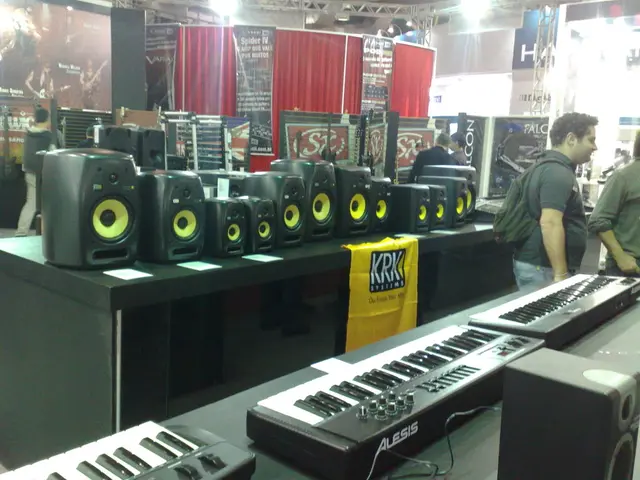Solar Innovation Yields Efficient Power Generation in High-Humidity Climates
In a groundbreaking development, researchers at the Korea Institute of Materials Science (KIMS) have created a highly durable flexible perovskite solar cell that retains its stability in high humidity environments. This innovative breakthrough, funded by the National Research Council of Science & Technology (NST), the National Research Foundation of Korea (NRF), and a cooperative project between Korea and Switzerland (SuraFlexi), could lead to significant advancements in solar technology.
The new perovskite solar cell, formulated by Dr. Dong-chan Lim and Dr. So-yeon Kim and their team, has been tested extensively. The cells successfully maintained 96% of their efficiency after undergoing 10,000 bending cycles, demonstrating their remarkable flexibility and resilience. Moreover, they preserved 87% of their operational efficiency in extreme conditions tests, showcasing their robustness.
The study, published in the prestigious Chemical Engineering Journal, also highlighted the advancement's potential impact on solar manufacturing costs. With the ability to produce high-performance solar cells in normal atmospheric conditions, the need for costly controlled environments during manufacturing is eliminated, potentially leading to lower production costs and widespread deployment of rollable solar panels and other applications in lightweight, flexible electronics.
Institutions such as the University of Fribourg and Pusan National University played pivotal roles in the research. The team emphasizes the need for advancements in large-area processing technology for full commercialization of these solar solutions.
The researchers, who collaborate at the Korea Institute of Science and Technology (KIST), believe that this breakthrough sparks further creativity and advances in solar manufacturing, energy efficiency, and environmental consciousness. If successful, these endeavors will contribute significantly to the industrial growth necessary to transition to a more sustainable future.
The new perovskite solar cell's robustness was enhanced through a defect passivation strategy using two-dimensional (2D) perovskite materials. Perovskite solar cells, known for their exceptional light absorption, high flexibility, and low production costs, are poised to play a crucial role in the future of renewable energy.
This development sets a precedent for future innovations in solar technology, opening up exciting possibilities for the future of renewable energy and sustainable living. The hope is that this breakthrough will inspire further advancements in solar manufacturing, energy efficiency, and environmental consciousness, paving the way towards a greener and more sustainable world.








